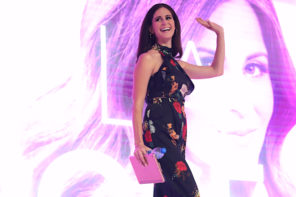What inspired you to write the book? What sparked your interest?
I had picked up hints about Ida Craddock’s story at various points along the way, particularly through my work on American religious seekers. It was only after I had finished Restless Souls, though, that I managed to get to the archive at Southern Illinois University in Carbondale. Even then, I went as much to have a look at the papers of Paul Carus as the Craddock collection. It was what I found in the archives that inspired me to write the book—Craddock’s unpublished book manuscripts on everything from ancient sex worship to contemporary marriage reform. And then there was her journal of mystical experiences—a diary so baffling and intense in its combination of spiritualism and sexuality as to demand attention.
With those little-explored materials in hand I hoped to tease out her story, a tale of a dangerous and idiosyncratic woman drawn into a long battle with America’s most powerful evangelical censor, Anthony Comstock, head of the New York Society for the Suppression of Vice. The showdown between Craddock and Comstock had an almost epic quality, and I wanted to see if I could capture the tragic force of that drama, while remaining utterly dedicated to the highest standards of scholarly evidence and research.
What is the most important take-home message for readers?
In earlier incarnations of the manuscript I had outlined the four “take-home” points with a ham-fisted directness that answered to my academic sensibility, but that made for deadly prose. I searched for ways to make those analytic points within the story rather than apart from it. To step back here once again, the big issues at stake in the book could be boiled down to these questions: 1) How much muscle would evangelical Protestantism have to define the country in Christian terms—in this instance, to enforce the norms of American literary, sexual, and religious expression? 2) Would women—in this case, ambitiously learned ones like Craddock—be able to claim academic standing, spiritual authority, and social equality in American public life? 3) Was visionary experience an empowering capacity or a debilitating clinical symptom? Specifically, could Craddock’s mysticism be contained within one psychological or psychoanalytic category or another? 4) Was the erotic redeemable, a grace rather than a curse, a spiritual yearning as much an animal appetite? Again concretely, would Craddock be able to salvage sexuality for those who came to her for religious advice and physiological knowledge?
Is there anything you had to leave out?
I have always had a hard time leaving things out—as if every nugget I find has to have its chance to shine somewhere in the narrative. I came to be quite intrigued, for example, with the secretive curatorial practices of nineteenth-century librarians, the hiding away of certain erotic and religious materials in private cases and off-limits cabinets. I wanted to know who was able to obtain access to certain books (such as Richard Payne Knight’s Discourse on the Worship of Priapus) and who could not get their hands on them. A lot of that material had to be left out of the story proper, though I snuck some of it into the footnotes—for example, the University of Chicago PhD student in the 1890s who does get access to the British Library’s “Secretum.”
I may not have learned yet how to leave enough out of my work, but I think I have gotten closer to tautness with this book than most other things I have written. I wanted the Craddock story to be readable, not to let it get bogged down in my own tangential preoccupations. In that sense, leaving things out is very much a worthy discipline, not an editorial sacrifice.
What are some of the biggest misconceptions about your topic?
It is easy to underestimate the power that a moral crusader like Anthony Comstock had. One might think of him as a pious exhorter or scold, but he is more like Jerry Falwell with a badge. What starts as a New York voluntary society, with roots in the YMCA, grows into a federally sponsored vice-busting organization. Craddock was, in some ways, small fry in Comstock’s larger campaign, but his power to destroy her is emblematic of his legal and civic clout.
It is also common to overestimate the extent of religious freedom in American culture. Craddock gained no traction whatsoever in marshaling First Amendment liberties against legal proscriptions of obscenity and blasphemy. Indeed, that she claimed to be Pastor of the Church of Yoga only made her seem doubly damned; a purveyor of blasphemous obscenity.
Finally, we still often associate the Victorian era with tight-lipped reticence about sexuality. The forthrightness of Craddock’s sexual counseling and writing belie that stereotype. She and her clients engaged in frank and spirited exchanges about sexuality—foreplay, orgasm, masturbation, same-sex attraction, extramarital affairs, sexual abuse, and ecstatic union. Her case notes are utterly candid in their intimate detail.
Did you have a specific audience in mind when writing?
I can’t get scholarly specialists out of my head as a target audience. Sometimes when I was writing on some particularly eccentric byway that Craddock traveled, I could not help but ask myself: What would Mark Noll think of this? It is as if my field still has an evangelical superego shadowing it—or, at least, it is one that continues to haunt me.
Most of the time, though, I was struggling to imagine the really smart undergraduate in a liberal arts college who might be reading the book in a course. In other words, my imagined audience was a clever, college-educated cohort who would enjoy discussing things like religion, sex, free speech, censorship, women’s rights, blasphemy, and obscenity. It was not finally an audience of specialists I dreamed of but free-ranging brainiacs—in other words, readers with some of the daring spirit of nineteenth-century amateurs.
Are you hoping to just inform readers? Give them pleasure? Piss them off?
I am definitely hoping to offer my readers good, even artful, prose. Whether I succeed in that, I don’t know. But, this much I am sure about: If and when I fail, it is not for lack of a painstaking commitment to the poetry in the historical craft.
I don’t like pissing people off, but nonetheless this book is a tale of a certain kind of culture war that remains familiar to us. Craddock pissed off Comstock, and vice versa—indeed, intensely so in both directions. I tried hard not to caricature Comstock, a figure regularly lampooned and excoriated in his own day and long afterward. Still, it is hard not to see him as the sanctimonious villain in the tragedy that turns Craddock into a martyr for free speech. I have a difficult time imagining Donald Wildmon, Albert Mohler, and company taking any delight in this story as I tell it.
What alternative title would you give the book?
Incredibly, the title and subtitle are word for word what I suggested: Heaven’s Bride: The Unprintable Life of Ida C. Craddock, American Mystic, Scholar, Sexologist, Martyr, and Madwoman. My favorite word in that overly exuberant title is unprintable. That adjective, I think, is just right for Craddock, a figure whose writings and lectures were so often deemed unprintable. It also, of course, has the playful effect of making my book sound forbidden—as if to recover Craddock’s story from the oblivion of censorship is itself an illicit gesture.
If I were now to reconsider the title, I might think about a shorter and less titillating subtitle. I also thought about a title that would call attention to the central conflict in the book between Craddock and Comstock and also perhaps between Craddock and her posthumous psychoanalyst, Theodore Schroeder. But I could never make one of those work.
How do you feel about the cover?
I feel ecstatic about the cover—and not just because it has two nearly nude figures on it. In Craddock’s diary she called attention to William Bouguereau’s painting of Eros carrying Psyche off into the heavens. She explicitly pictured herself as Psyche and her angelic guide as Eros. In other words, she saw her own spiritual experience mirrored in Bouguereau’s work. Sure, the jacket design makes the book look sexy, but it is much more than that, which becomes clear as the story unfolds.
Also, the other great thing about the jacket is how much effort—and luck—it took for me to locate the private collection in which the painting is now housed. This was one of those research fixations that panned out in surprisingly wonderful ways. I was extremely fortunate to locate this artwork at all and even more fortunate to gain access to it in person.
Is there a book out there you wish you had written? Which one? Why?
I suppose that I would linger on the desired, yet impossible for me, a book of poetry. Say, Tony Hoagland’s What Narcissism Means to Me or his Unincorporated Persons in the Late Honda Dynasty. I appreciate his humor and the humaneness of his observations on our everyday lives; I admire the directness and profound accessibility of his work. If I were going to sound yet more unattainable, I would point to the Princeton class of ’48 poets, Galway Kinnell and W. S. Merwin.
What’s your next book?
I am toying with three topics: The first is to play out the history of the study of religion in American culture—not so much as a history of the discipline, but as a history of a broad area of inquiry and fascination, again for amateurs as much as bona fide professionals. This is a project at an early stage for Princeton University Press. The second is a history of atheism in the United States, with a particular emphasis on the period after the supposed “golden age of freethought” in the late nineteenth century. At this point I see the 1920s and 1930s as a watershed moment. Again, that’s quite preliminary. The third one is a reflection on the quest for perfection in American culture. I take this to have significant religious roots, but the inquiry would quickly spill out into any number of other cultural realms. That one is even more preliminary still.




